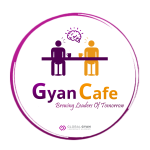Differentiation Strategy in Low-engagement Products

How do we create differentiation in low-engagement, mature product categories?
– a participant at a recent workshop
For a while, I was stumped when I heard the question. All the examples of differentiation that we normally discuss (Apple, BMW, Nike, Taj Hotels) are of high-engagement categories.
Fortunately, I could come up with a few examples of products that were similar to her product category. This article is prompted by that discussion.
Just so that we are on the same page: differentiation is when a product or service can cause the customer to be willing to pay a price that is higher than comparable alternatives in that category. Low-engagement products typically tend to be low-priced and frequently-purchased, and because there are multiple, similar alternatives available, not much thought goes into making brand choices. Think of cereals, toothpastes, soaps, pens, staple foods, etc.
There is a belief amongst many marketers that low engagement products win only on the basis of push activities like price (discounts, promotions, schemes), dominant advertising (top of mind awareness/recall) and distribution (shelf space, reach). On the other hand, the strategy of differentiation is about creating pull, making the customer seek the brand out and be ready to pay a premium price, in spite of alternatives.
Can low-engagement products which are often on the path to commoditisation be differentiated?
Let us take the example of salt, a classic text book commodity which is relatively price inelastic. An ingredient used daily in food, it is quite low-priced and it is a simple chemical that anyone can produce. And for the most part, all salt looks and tastes the same. How can you differentiate salt?
Yet, this is a product category that has seen considerable differentiation. Nearly 40 years ago, when the Indian government launched its campaign against iodine deficiency disorder, Tata Salt partnered as the first Iodised salt; two decades later, it adopted an emotional brand positioning as ‘desh ka namak‘ – a campaign that has further evolved. Branded salt players like Tata Salt have prices at least 2-3X of the unbranded, loose salt which still dominates the consumer market.
And, who can forget the salt sprinklers launched by Catch, at a price that was 4-5X of the branded, packaged variety – a significant premium (even accounting for the lower unit size & packaging cost) for a feature that clearly added value to customers.

Recently, I was shocked to see the price of a jar of salt on my dining table. At Rs 400 per kilogram, it was 20X the leading brand’s price. As if to justify its premium, the salt was adorned in a princess-like colour and had a lyrical origin story on the packaging. Pristine, pure and pink, the Himalayan rock salt was so beautiful that I hesitated using it in my salad. What a journey for the humble, common salt!

Even a simple low-engagement, mature & inelastic product like salt can use tangible features (Iodised, sprinkler, Himalayan rock salt) and intangible stories (patriotism, purity, pink) to build premium priced narratives. Similar examples can be found in other categories like pens, soaps, breakfast cereals and toothpastes.
It is interesting to note that most of the top 10 brands in the 2015 list of most trusted brands are from categories that would be considered low engagement, including salt, toothpaste and soap. And if you cannot charge a premium for trust, then you are surely missing a marketing opportunity!


